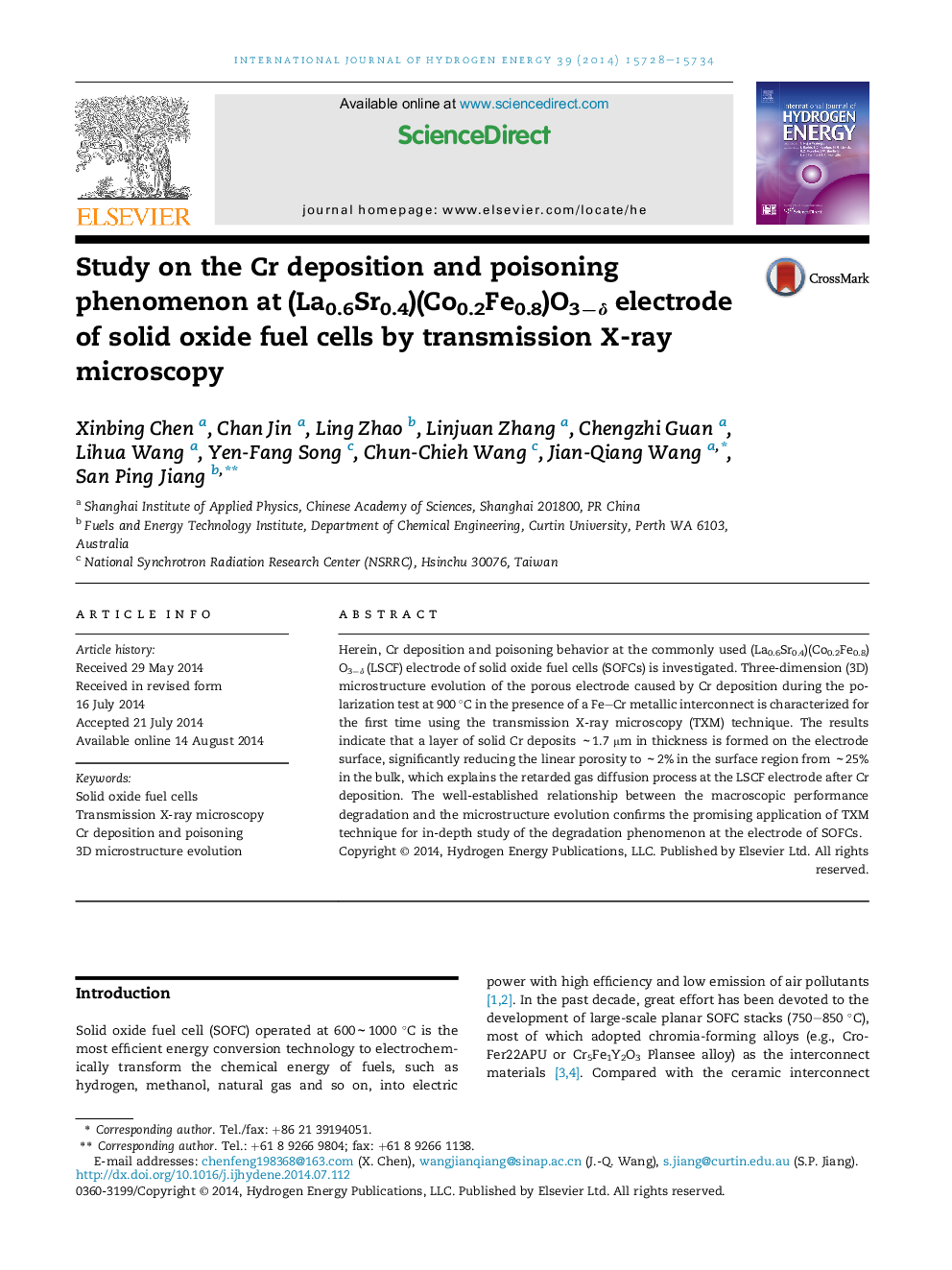| Article ID | Journal | Published Year | Pages | File Type |
|---|---|---|---|---|
| 1272411 | International Journal of Hydrogen Energy | 2014 | 7 Pages |
•Cr deposition behavior at the LSCF cathode of SOFCs was characterized by TXM.•3D distribution of Cr deposits in the porous electrode was successfully observed.•Electrode performance degradation was related to the microstructure evolution.
Herein, Cr deposition and poisoning behavior at the commonly used (La0.6Sr0.4)(Co0.2Fe0.8)O3−δ (LSCF) electrode of solid oxide fuel cells (SOFCs) is investigated. Three-dimension (3D) microstructure evolution of the porous electrode caused by Cr deposition during the polarization test at 900 °C in the presence of a Fe–Cr metallic interconnect is characterized for the first time using the transmission X-ray microscopy (TXM) technique. The results indicate that a layer of solid Cr deposits ~1.7 μm in thickness is formed on the electrode surface, significantly reducing the linear porosity to ~2% in the surface region from ~25% in the bulk, which explains the retarded gas diffusion process at the LSCF electrode after Cr deposition. The well-established relationship between the macroscopic performance degradation and the microstructure evolution confirms the promising application of TXM technique for in-depth study of the degradation phenomenon at the electrode of SOFCs.
Graphical abstractFigure optionsDownload full-size imageDownload as PowerPoint slide
